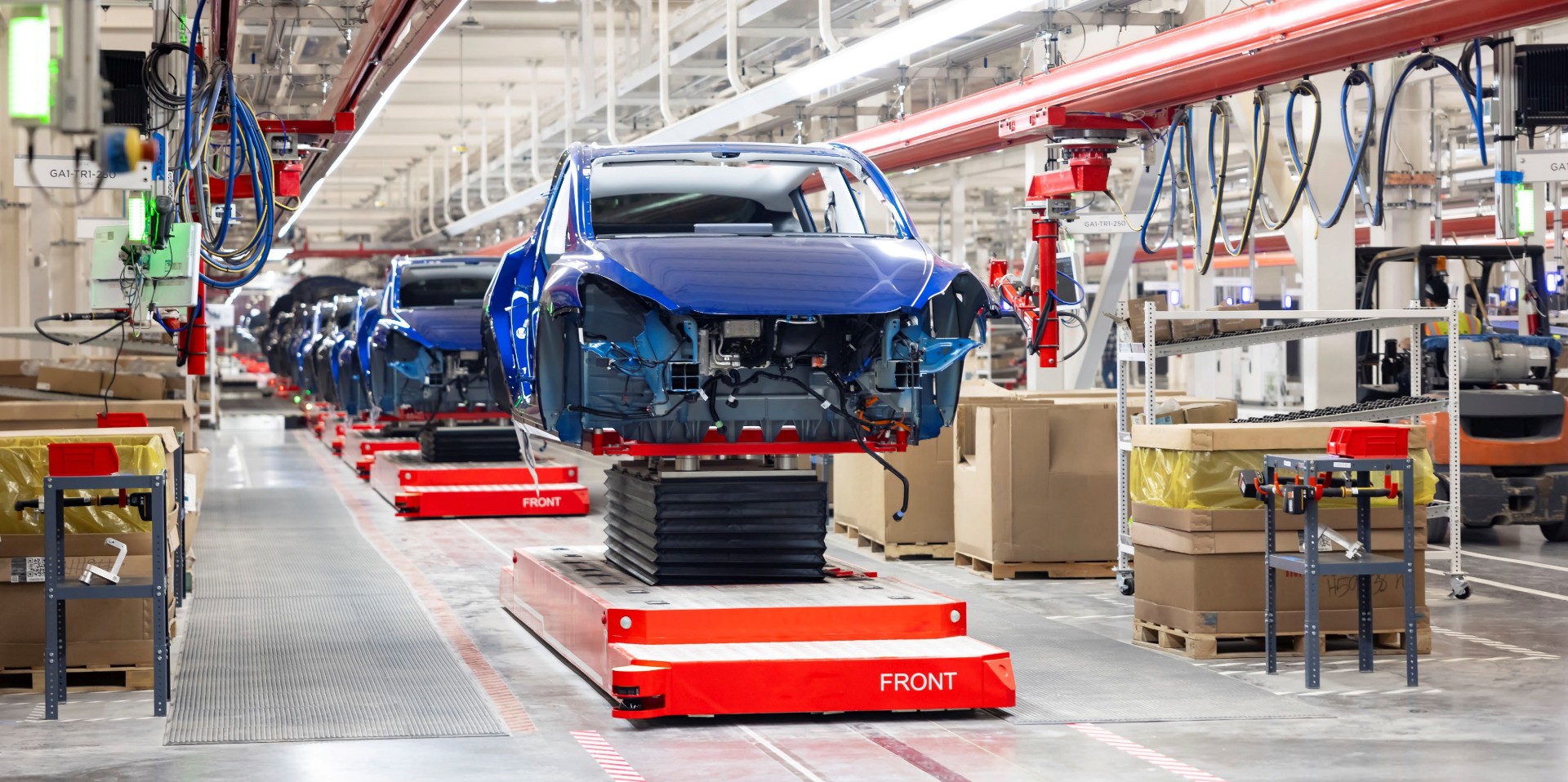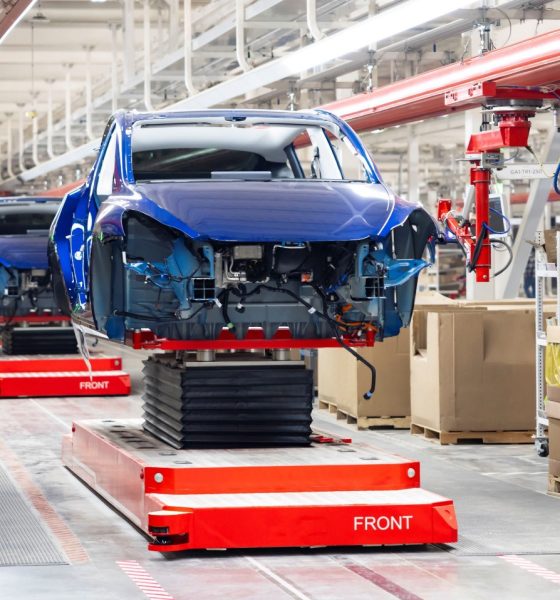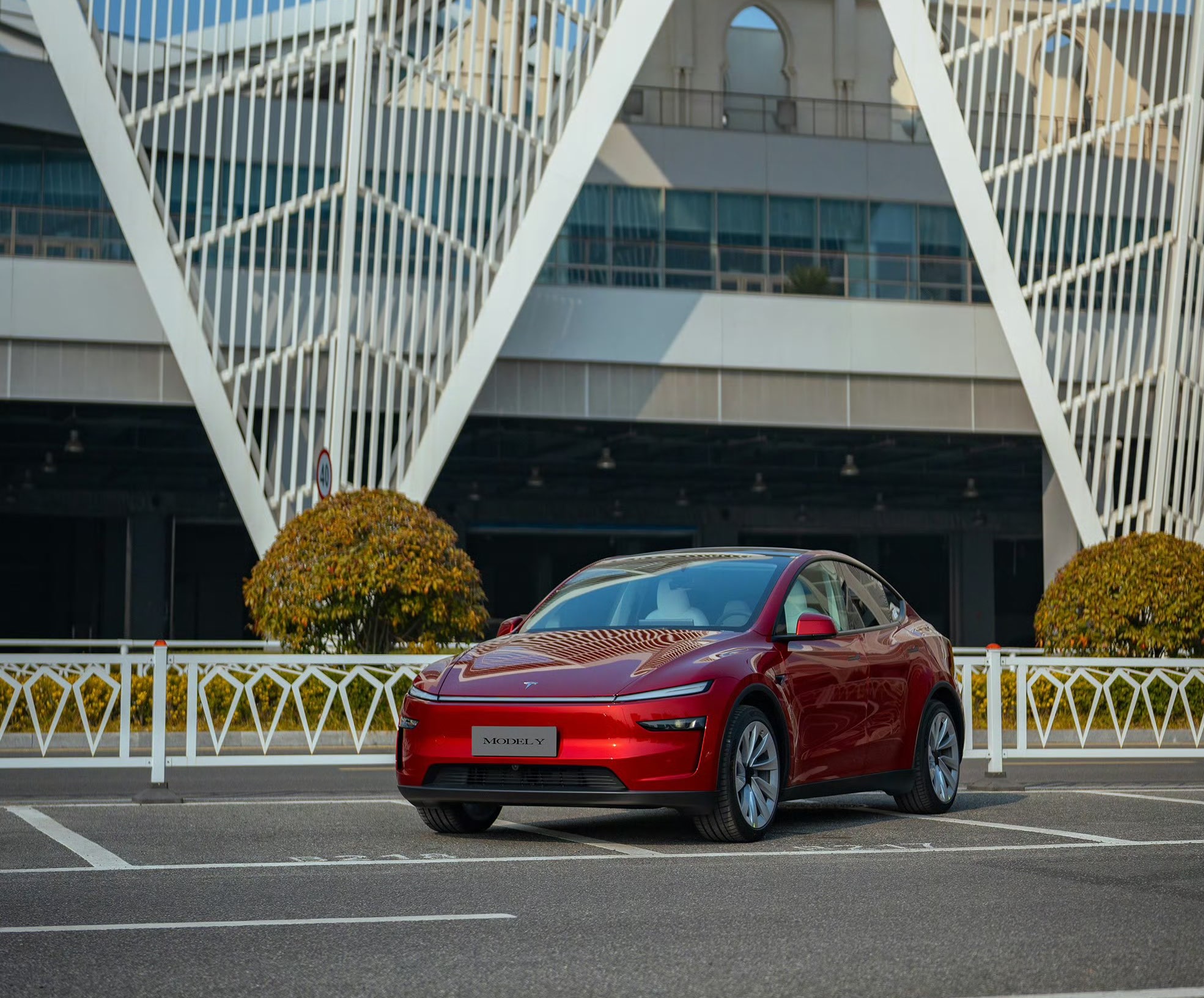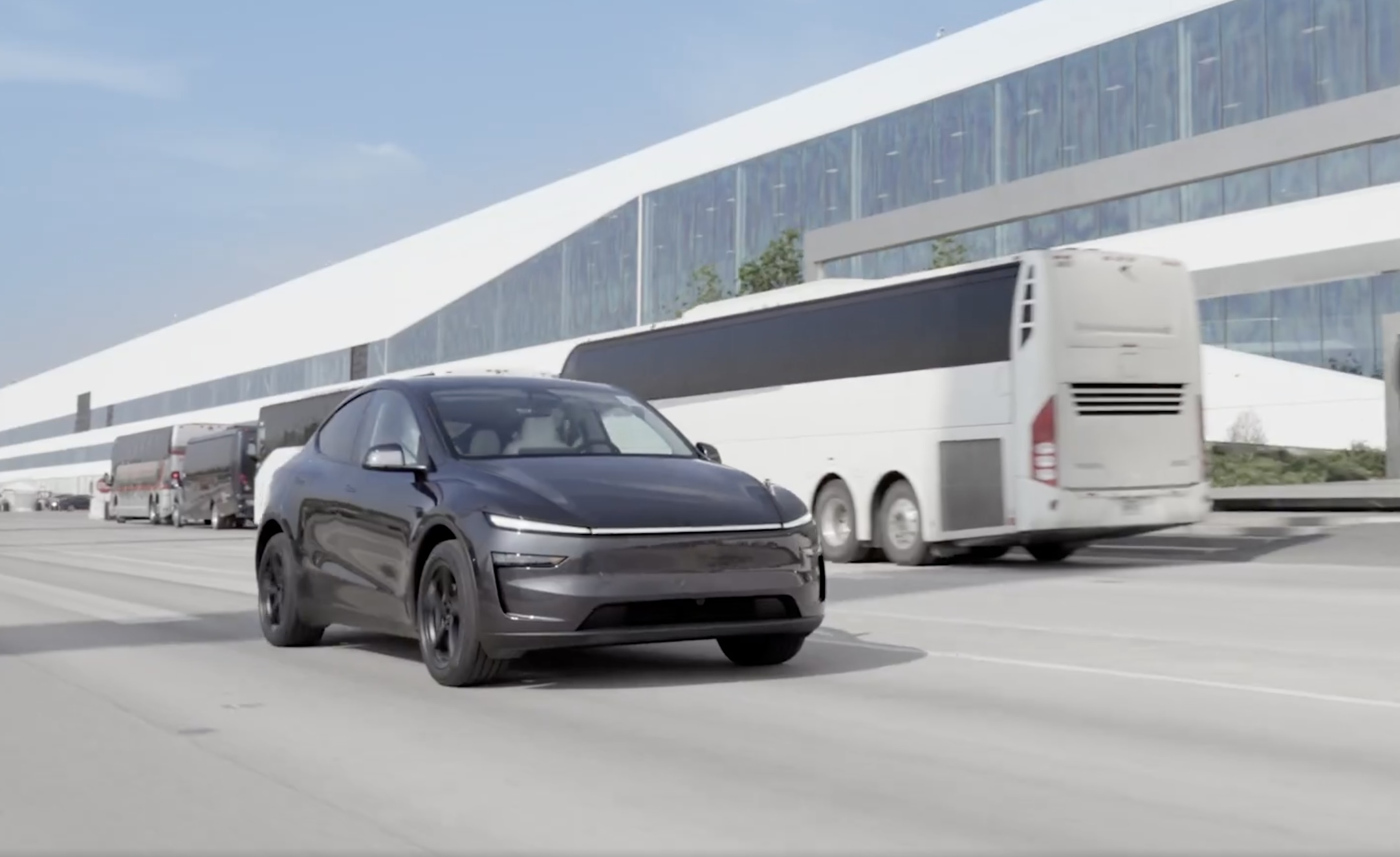

Investor's Corner
LIVE BLOG: Tesla (TSLA) Q4 and Full Year 2021 earnings call summary
Tesla’s (NASDAQ:TSLA) fourth-quarter and full-year earnings call comes on the heels of a breakthrough quarter that saw the company grow its revenue by 65% YoY in Q4 to $17.7 billion while improving its operating income to $2.6 billion. As noted by the company in its Q4 and FY 2021 Update Letter, it is now no longer a question if electric vehicles are a viable and profitable business.
Despite various projects such as the active buildout of Giga Berlin and Gigafactory Texas, as well as the additional expansions of Giga Shanghai and the Fremont Factory, Tesla still ended the fourth quarter with a strong war chest, with quarter-end cash and cash equivalents increasing sequentially by $1.5 billion to $17.6 billion in Q4 2021.
The following are live updates from Tesla’s Q4 and FY 2021 Earnings Call. I will be updating this article in real-time, so please keep refreshing the page to view the latest updates on this story. The first entry starts at the bottom of the page.
15:32 – And that ends the Q4 and FY 2021 earnings call! That was an interesting ending to it, with Elon Musk discussing the similarities of the chip shortage to the toilet paper panic in the United States due to Covid. Classic Elon Musk.
That said, thanks so much for staying with us for yet another live blog. Here’s to the next! Cheers!
15:28 – New Street Research analyst Pierre Ferragu asks about Tesla’s 4680 ramp, and how its form factor can be adopted by suppliers as well. Is it something that will be used outside Tesla?
Zachary Kirkhorn confirms that yes, Tesla has engaged a number of its suppliers on the 4680 form factor. “We’re engaged because we think it’s a great form factor,” he said.
That said, the 4680 form factor is not “the ultimate form factor.” Iron cells, for example, are not optimized for the 4680 design.
15:24 – Bernstein analyst Toni Sacconaghi asks about FSD’s take rate. Elon notes that with FSD, “you do not want to look into the rearview mirror” since the technology is such a profound step change. And when that happens, the value of such a system will be very big in number.
With regards to Tesla’s product roadmap, Sacconaghi asked if Tesla can hit about 3 million vehicles per year by 2024 by just selling a couple of high volume cars and vehicles like the Cybertruck. Elon rounds back to FSD and the value it provides. “If the cost of our cars don’t change at all, we’ll still sell as much as we make,” he said.
15:18 – Ben Kallo from Baird asks about Tesla’s R&D organization efforts. Tesla executives noted that while the company does not have “incubators,” teams simply work on things that go into products. Elon and the other executives then highlighted the value of working on real projects, which are taken from innumerable ideas.
15:15 – Analyst questions begin. First up is Canaccord analyst Jed Dorsheimer, who asked about Tesla’s Energy Business and Energy Products. Elon notes that Tesla will using iron-based cells for its energy storage products. “All stationary storage will storage would shift to an iron-based or non-nickel-based system,” he said, adding that manganese is also a “wild card” for batteries.
Musk admits that Tesla Energy was shortchanged last year in favor of the company’s vehicle business. But this was done because of chips, not cells. Long term, Tesla is still aiming for a TWh/year energy business.
When asked if 2022 will be a year where Tesla Energy will recover, Musk noted that the chip shortage might alleviate this year. But there will be growth this year. Definitely. “If we respond to demand, (Tesla Energy) will grow by two or three hundred percent,” Musk said.
15:10 – On Level 4 abilities and if Dojo is required. Elon notes that Dojo is not needed to reach FSD. He also explains that ultimately, the human driver is not a very high standard at all. “Several profound improvements coming to the FSD stack in the next few months,” Musk said.
15:07 – On margin improvements. The Model Y is key since it’s just so much more profitable than the Model 3. Localization in Giga Shanghai is also something notable since localization is a huge help for margins. Of course, price increases in certain markets help on margin improvements as well.
Zach did note that Tesla’s software business should be the main focus, as the margins there are very notable. This will be very true when FSD and Robotaxis finally happen.
15:04 – A question about the constraint to Cybertruck production was asked. Elon notes that it’s probably not gonna be batteries that would be the Cybertruck’s constraint. There are lots of new technologies in it that will take some time to work through. Its price also has to be reasonable. The goal is currently to build 250,000 Cybertrucks per year.
15:01 – A question about each factory’s max output was asked. Elon notes that it’s hard to answer such a question, since it’s easy to expand the maximum capacity of a factory. “It’s possible to increase capacity,” Elon noted, adding that Tesla will be increasing its factories’ capacity across the board.
15:00 – A question about the first use of the Tesla Bot has been asked. “If we can’t find a use for it, we can’t expect others to find a use for it. The first use of Optimus will be at Tesla, like moving parts around the factory,” Musk said. He also joked that the name “Optimus sub-prime” is sticking to the project.
As for Tesla Insurance, it is currently available in five states. Both Elon and Zach agree that insurance with informatics are useful, since if people know how they’re driving, they tend to drive safer. Take rates have been quite strong as well. “Our internal goal here by the end of the year is that 80% of Tesla customers could choose Tesla insurance by the end of the year,” Kirkhorn said.
14:56 – A question about a potential perpetual and term FSD licenses was asked. Elon notes that such a system seems complicated. Tesla would rather focus on ensuring that it could offer FSD at a reasonable price.
As for Dojo, yes, it is on track for “doing something useful” summer of this year. When the FSD development team would rather use Dojo than their current systems, then that’s the time that the supercomputer would start being utilized. “Dojo is not needed for Full Self-Driving. It’s a cost optimization for training vast amounts of data,” Musk explained, later noting that “If Dojo is competitive, it is the kind of thing we might offer to other companies.”
14:52 – A question about Tesla’s potential line of home HVAC systems was asked. Elon and the other Tesla executives seem very positive about the idea. It’s not gonna stop at home HVAC systems, either, with the “next logical step” being water heating. “I think it would be quite a game-changer down the road, but we’ve got a lot of fish frying,” Elon said.
14:50 – Investor questions are starting. First is about the $25,000 car. “We’re not currently working on the $25k car. We have enough on our plate right now. Too much, frankly,” Musk said. The CEO also noted that the question is wrong, since “the thing that really matters is when the car is autonomous, which causes cost of transport to drop by 4-5x.”
14:48 – Zach Kirkhorn takes the stage. He highlights that regulatory credits contributed less to Tesla’s finances this quarter, and it will continue to be reduced. He also notes that supply chain constraints impacted Tesla’s excess expenses, just like Elon Musk’s CEO Performance Award. He congratulates the Tesla team for a “terrific” 2021, and he notes that he is looking forward to another amazing year. Both Elon and Zach also thank Tesla’s suppliers for their help.
14:43 – In terms of priority, Musk believes that the Optimus humanoid robot is the most important product from Tesla. “This, I think, will be the most significant [product] over time,” Musk said, adding that “I’m not sure what an economy even means” if there is no longer such a thing as labor shortage.
The in-house 4680 battery cell program was also discussed. Structural packs are being assembled every day, and they are being built into vehicles that are produced in Texas every day. First vehicles with 4680 structural packs should start deliveries in the near future, perhaps by the end of the quarter.
14:40 – After discussing the value of FSD, Elon starts discussing Tesla’s product roadmap. Musk says that he’s not gonna cover all of them since some of these products deserve a launch of their own. Pretty interesting.
The fundamental focus of Tesla this year is scaling output, so both last year and this year, if we were to introduce this year, our total vehicle output will decrease. “If we were to introduce new vehicles our total vehicle output would decrease,” he said. “We will not be introducing new vehicle models this year,” he noted, though he stated that there will be lots of engineering for those vehicles like the Cybertruck, Roadster, and products like Optimus.
14:36 – With this in mind, Elon notes that Tesla’s focus now will be the future. In short, Giga Berlin and Giga Texas. “We’ve been making quite a few cars in Austin and Berlin,” he said lightly, referencing the constant drone flyovers on both sites.
While Tesla is not poised to announce a new Gigafactory site this year, Musk did state that Tesla will be looking at new Gigafactory locations towards the end of the year. Oh, and Giga Texas will be building with 4680 cells and structural packs and will begin deliveries once certification is complete.
14:34 – Martin Viecha takes the stage. Elon is here, and so are Zach Kirkhorn and other Tesla executives. Here’s Elon’s opening remarks. He states that 2021 was a breakthrough year for Tesla, with growth volume increasing by 90%. Tesla’s highest operating margins were recorded in the year as well. And as a sweet note, there’s now accumulated profitability since the start of the company went positive after Q4 2021.
14:32 – Okay, and we’re starting! It begins.
14:28 – And here we go. Music’s on so now it’s just a matter of waiting. Will this start in Elon Time?
14:20 – While the Q4 and FY 2021 Update Letter was exciting, we gotta be honest here. This earnings call is extra compelling because Elon Musk previously announced he would be providing an updated product roadmap today. The Cybertruck’s been spotted all around Giga Texas, and a fleet of Tesla Semis was featured in the Update Letter. Will these two projects get some legitimate announcements today? One can hope.
14:15 – Greetings, and welcome once more to our Live Blog! I think everyone had a good feeling that Q4 2021 would be Tesla’s best quarter yet, but I still find it pretty hard to wrap my head around the fact that this company that was teetering so close to the edge just a few years ago is such a strong and consistent business now. Tesla said it right in its Q4 and FY 2021 Update Letter: At this point, there’s no more argument about EVs and their viability.
Don’t hesitate to contact us with news tips. Just send a message to simon@teslarati.com to give us a heads up.

Investor's Corner
Mizuho keeps Tesla (TSLA) “Outperform” rating but lowers price target
As per the Mizuho analyst, upcoming changes to EV incentives in the U.S. and China could affect Tesla’s unit growth more than previously expected.

Mizuho analyst Vijay Rakesh lowered Tesla’s (NASDAQ:TSLA) price target to $475 from $485, citing potential 2026 EV subsidy cuts in the U.S. and China that could pressure deliveries. The firm maintained its Outperform rating for the electric vehicle maker, however.
As per the Mizuho analyst, upcoming changes to EV incentives in the U.S. and China could affect Tesla’s unit growth more than previously expected. The U.S. accounted for roughly 37% of Tesla’s third-quarter 2025 sales, while China represented about 34%, making both markets highly sensitive to policy shifts. Potential 50% cuts to Chinese subsidies and reduced U.S. incentives affected the firm’s outlook.
With those pressures factored in, the firm now expects Tesla to deliver 1.75 million vehicles in 2026 and 2 million in 2027, slightly below consensus estimates of 1.82 million and 2.15 million, respectively. The analyst was cautiously optimistic, as near-term pressure from subsidies is there, but the company’s long-term tech roadmap remains very compelling.
Despite the revised target, Mizuho remained optimistic on Tesla’s long-term technology roadmap. The firm highlighted three major growth drivers into 2027: the broader adoption of Full Self-Driving V14, the expansion of Tesla’s Robotaxi service, and the commercialization of Optimus, the company’s humanoid robot.
“We are lowering TSLA Ests/PT to $475 with Potential BEV headwinds in 2026E. We believe into 2026E, US (~37% of TSLA 3Q25 sales) EV subsidy cuts and China (34% of TSLA 3Q25 sales) potential 50% EV subsidy cuts could be a headwind to EV deliveries.
“We are now estimating TSLA deliveries for 2026/27E at 1.75M/2.00M (slightly below cons. 1.82M/2.15M). We see some LT drivers with FSD v14 adoption for autonomous, robotaxi launches, and humanoid robots into 2027 driving strength,” the analyst noted.
Investor's Corner
Tesla stock lands elusive ‘must own’ status from Wall Street firm

Tesla stock (NASDAQ: TSLA) has landed an elusive “must own” status from Wall Street firm Melius, according to a new note released early this week.
Analyst Rob Wertheimer said Tesla will lead the charge in world-changing tech, given the company’s focus on self-driving, autonomy, and Robotaxi. In a note to investors, Wertheimer said “the world is about to change, dramatically,” because of the advent of self-driving cars.
He looks at the industry and sees many potential players, but the firm says there will only be one true winner:
“Our point is not that Tesla is at risk, it’s that everybody else is.”
The major argument is that autonomy is nearing a tipping point where years of chipping away at the software and data needed to develop a sound, safe, and effective form of autonomous driving technology turn into an avalanche of progress.
Wertheimer believes autonomy is a $7 trillion sector,” and in the coming years, investors will see “hundreds of billions in value shift to Tesla.”
A lot of the major growth has to do with the all-too-common “butts in seats” strategy, as Wertheimer believes that only a fraction of people in the United States have ridden in a self-driving car. In Tesla’s regard, only “tens of thousands” have tried Tesla’s latest Full Self-Driving (Supervised) version, which is v14.
Tesla Full Self-Driving v14.2 – Full Review, the Good and the Bad
When it reaches a widespread rollout and more people are able to experience Tesla Full Self-Driving v14, he believes “it will shock most people.”
Citing things like Tesla’s massive data pool from its vehicles, as well as its shift to end-to-end neural nets in 2021 and 2022, as well as the upcoming AI5 chip, which will be put into a handful of vehicles next year, but will reach a wider rollout in 2027, Melius believes many investors are not aware of the pace of advancement in self-driving.
Tesla’s lead in its self-driving efforts is expanding, Wertheimer says. The company is making strategic choices on everything from hardware to software, manufacturing, and overall vehicle design. He says Tesla has left legacy automakers struggling to keep pace as they still rely on outdated architectures and fragmented supplier systems.
Tesla shares are up over 6 percent at 10:40 a.m. on the East Coast, trading at around $416.
Investor's Corner
Tesla analyst maintains $500 PT, says FSD drives better than humans now
The team also met with Tesla leaders for more than an hour to discuss autonomy, chip development, and upcoming deployment plans.

Tesla (NASDAQ:TSLA) received fresh support from Piper Sandler this week after analysts toured the Fremont Factory and tested the company’s latest Full Self-Driving software. The firm reaffirmed its $500 price target, stating that FSD V14 delivered a notably smooth robotaxi demonstration and may already perform at levels comparable to, if not better than, average human drivers.
The team also met with Tesla leaders for more than an hour to discuss autonomy, chip development, and upcoming deployment plans.
Analysts highlight autonomy progress
During more than 75 minutes of focused discussions, analysts reportedly focused on FSD v14’s updates. Piper Sandler’s team pointed to meaningful strides in perception, object handling, and overall ride smoothness during the robotaxi demo.
The visit also included discussions on updates to Tesla’s in-house chip initiatives, its Optimus program, and the growth of the company’s battery storage business. Analysts noted that Tesla continues refining cost structures and capital expenditure expectations, which are key elements in future margin recovery, as noted in a Yahoo Finance report.
Analyst Alexander Potter noted that “we think FSD is a truly impressive product that is (probably) already better at driving than the average American.” This conclusion was strengthened by what he described as a “flawless robotaxi ride to the hotel.”
Street targets diverge on TSLA
While Piper Sandler stands by its $500 target, it is not the highest estimate on the Street. Wedbush, for one, has a $600 per share price target for TSLA stock.
Other institutions have also weighed in on TSLA stock as of late. HSBC reiterated a Reduce rating with a $131 target, citing a gap between earnings fundamentals and the company’s market value. By contrast, TD Cowen maintained a Buy rating and a $509 target, pointing to strong autonomous driving demonstrations in Austin and the pace of software-driven improvements.
Stifel analysts also lifted their price target for Tesla to $508 per share over the company’s ongoing robotaxi and FSD programs.








